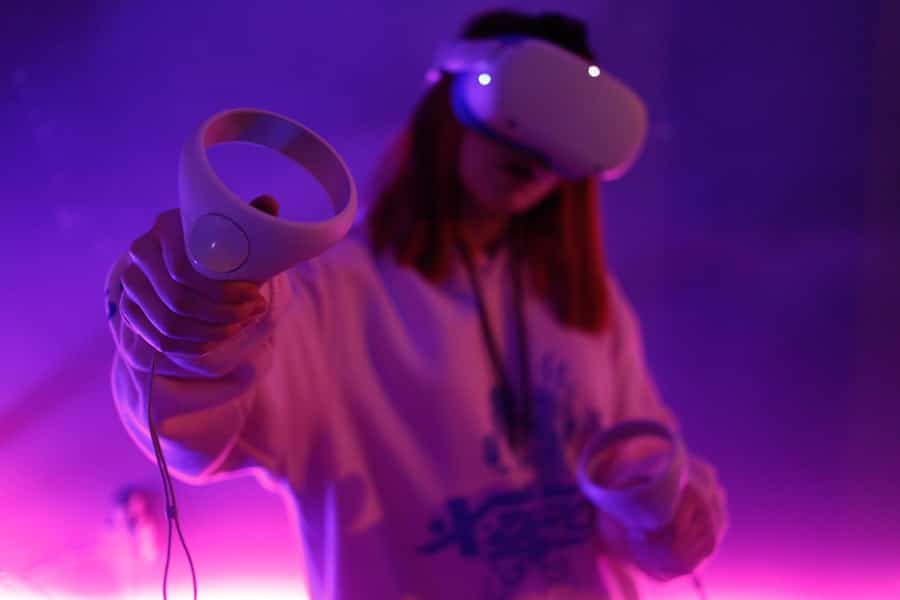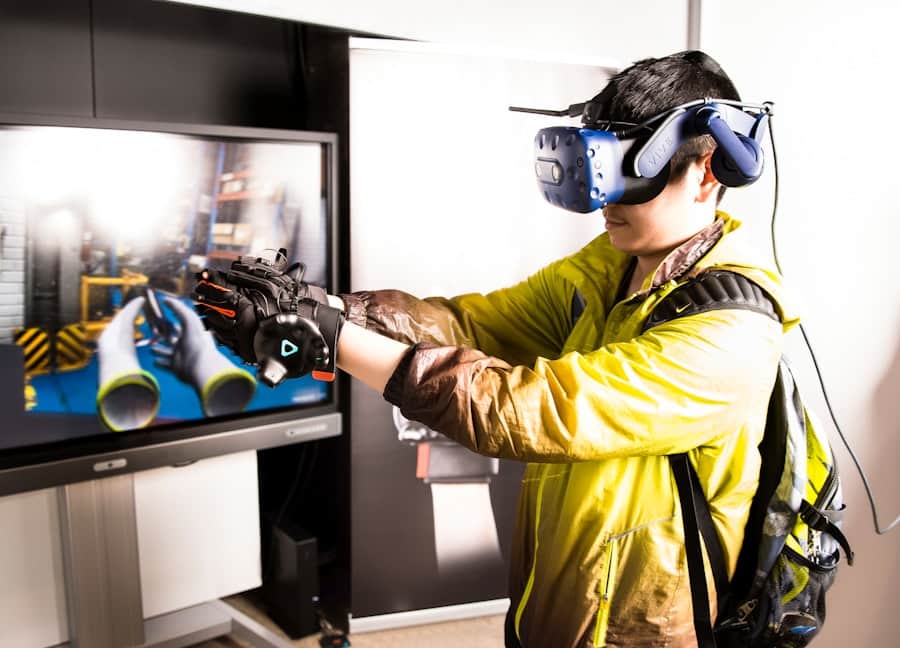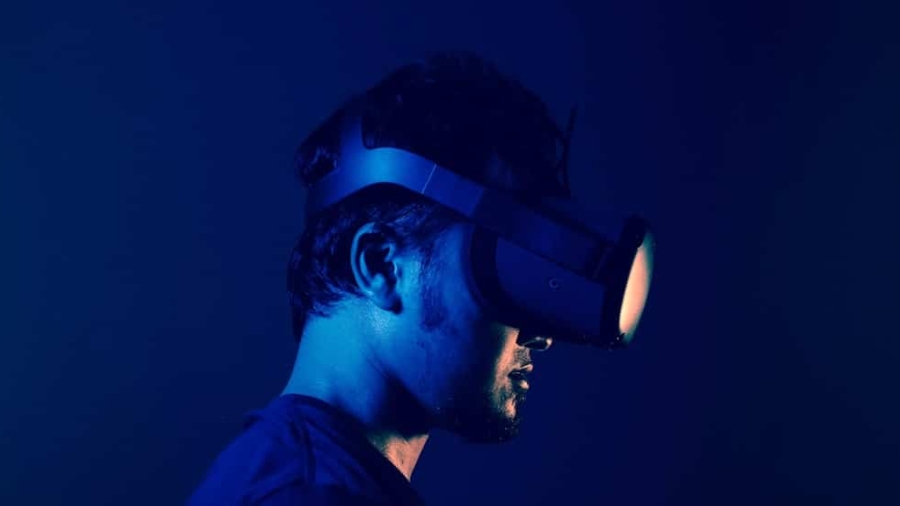The financial investment required to enter the realm of virtual reality (VR) gaming can be a significant barrier for many potential users. High-quality VR headsets, such as the Oculus Quest 2 or the Valve Index, often come with a hefty price tag that can range from several hundred to over a thousand dollars. This initial cost is compounded by the need for powerful gaming PCs or consoles that can support VR experiences, which may require additional investments in hardware upgrades.
For instance, a gaming rig capable of delivering a smooth VR experience typically needs a high-end graphics card, a robust processor, and ample RAM, all of which can add up quickly. As a result, the total cost of entry into VR gaming can easily exceed the budget of casual gamers or those who are not fully committed to the medium. Moreover, the ongoing costs associated with VR gaming can further deter potential users.
Many VR games and experiences are priced similarly to traditional video games, often ranging from $20 to $60 or more. Additionally, there are subscription services and in-game purchases that can add to the overall expense. This financial burden can create a perception that VR gaming is an exclusive hobby reserved for affluent individuals or dedicated enthusiasts, thereby limiting its appeal to a broader audience.
The high cost of entry not only restricts access but also contributes to the slow adoption rate of VR technology in the gaming community.
Key Takeaways
- High cost of entry can be a barrier for many individuals to access virtual reality gaming.
- Limited content and game selection may deter potential users from investing in virtual reality gaming.
- Technical barriers and compatibility issues can make it difficult for some individuals to set up and use virtual reality gaming systems.
- Lack of awareness and marketing may contribute to the slow adoption of virtual reality gaming.
- Physical discomfort and health concerns, such as motion sickness, can be a drawback for some users of virtual reality gaming.
Limited Content and Game Selection
While the VR gaming landscape has grown significantly in recent years, it still suffers from a limited selection of content compared to traditional gaming platforms. Many popular franchises and genres have yet to make a substantial leap into the VR space, leaving gamers craving experiences that are not readily available. For instance, while there are notable titles like “Half-Life: Alyx” and “Beat Saber,” many gamers find themselves yearning for adaptations of beloved series such as “The Legend of Zelda” or “Final Fantasy.” The absence of these major titles can lead to a perception that VR gaming lacks depth and variety, ultimately discouraging potential users from investing in the technology.
Additionally, the development of VR games often requires significant resources and expertise, which can deter smaller studios from entering the market. Creating immersive and engaging VR experiences is a complex process that demands specialized knowledge in areas such as 3D modeling, user interface design, and motion tracking. As a result, many indie developers may choose to focus on traditional gaming platforms where they can reach a larger audience with less financial risk.
This trend further exacerbates the issue of limited content in the VR space, as fewer developers are willing to take on the challenges associated with creating high-quality VR games.
Technical Barriers and Compatibility Issues

Technical barriers present another significant hurdle for potential VR gamers. The complexity of setting up a VR system can be daunting for those who are not particularly tech-savvy. Users must navigate various components, including headsets, sensors, and controllers, all of which require proper configuration to function seamlessly.
For example, some systems necessitate external sensors that must be strategically placed in a room to track movement accurately. This setup process can be time-consuming and frustrating, leading many users to abandon their VR aspirations altogether. Compatibility issues further complicate the landscape of VR gaming.
Different headsets may not support the same games or applications, creating confusion for consumers who may not be aware of these limitations. For instance, a game available on the Oculus platform may not be accessible on the HTC Vive or PlayStation VR due to exclusivity agreements or technical constraints. This fragmentation within the VR ecosystem can lead to frustration among users who invest in a particular headset only to discover that their desired games are unavailable.
Such technical barriers not only hinder user experience but also contribute to the perception that VR gaming is overly complicated and inaccessible.
Lack of Awareness and Marketing
Despite its potential, virtual reality gaming has struggled with visibility in the broader gaming market. Many consumers remain unaware of the advancements in VR technology and the unique experiences it offers. Traditional marketing strategies have often overlooked VR as a viable platform, leading to a lack of promotional campaigns that effectively communicate its benefits and capabilities.
As a result, potential users may not fully understand what VR gaming entails or how it differs from conventional gaming experiences. Moreover, the marketing efforts that do exist often fail to resonate with mainstream audiences. Many advertisements focus on showcasing high-end graphics or technical specifications rather than highlighting immersive gameplay or social interactions within virtual environments.
This approach can alienate casual gamers who may not prioritize cutting-edge technology over engaging content. To bridge this gap, marketing strategies must evolve to emphasize the unique aspects of VR gaming—such as its ability to transport players into fantastical worlds or facilitate social interactions with friends—thereby fostering greater interest and awareness among potential users.
Physical Discomfort and Health Concerns
Physical discomfort associated with prolonged use of VR headsets is another factor that can deter potential gamers from embracing this technology. Many users report experiencing symptoms such as motion sickness, eye strain, or headaches after extended gameplay sessions. These issues often arise from discrepancies between visual input and physical movement, leading to disorientation and discomfort.
For instance, when players move their heads in one direction while their virtual avatar remains stationary, it can create a jarring experience that triggers nausea or dizziness. Health concerns related to VR usage extend beyond immediate discomfort; they also encompass long-term effects on vision and posture. Prolonged exposure to screens at close range can strain the eyes and potentially lead to vision problems over time.
Additionally, users may adopt poor posture while immersed in virtual environments, resulting in musculoskeletal issues such as neck or back pain. These physical challenges can create apprehension among potential users who may fear that engaging with VR gaming could negatively impact their health.
Social Stigma and Misconceptions

Social stigma surrounding virtual reality gaming can also play a significant role in its limited adoption. Many individuals perceive VR as an isolating experience that detracts from real-world social interactions. This misconception is often fueled by portrayals in popular media that depict gamers as reclusive individuals who prefer virtual escapism over meaningful connections with others.
As a result, potential users may hesitate to invest in VR technology due to concerns about how it might affect their social lives or how they are perceived by peers. Furthermore, misconceptions about the nature of VR gaming can lead to skepticism regarding its legitimacy as a form of entertainment. Some individuals may view it as a passing trend rather than a legitimate evolution of gaming technology.
This perception can be reinforced by negative narratives surrounding early iterations of VR systems that were criticized for being clunky or underwhelming. To combat these stigmas and misconceptions, advocates for VR gaming must actively promote its benefits—such as fostering social connections through multiplayer experiences or providing unique opportunities for creative expression—thereby reshaping public perception.
Accessibility and Inclusivity Challenges
Accessibility remains a critical issue within the realm of virtual reality gaming.
For example, users with limited mobility may struggle to navigate environments that require physical movement or interaction with controllers that demand fine motor skills.
Additionally, individuals with visual impairments may find it challenging to enjoy games that rely heavily on visual cues without adequate accommodations. Efforts to improve accessibility in VR gaming have begun to emerge; however, they are still in their infancy. Developers must prioritize inclusive design principles when creating new titles and experiences to ensure that all players can participate fully.
This includes implementing features such as customizable control schemes, audio descriptions for visually impaired users, and options for seated gameplay that accommodate those with mobility challenges. By addressing these accessibility concerns, the industry can foster a more inclusive environment that welcomes diverse audiences into the world of virtual reality gaming.
Competition from Traditional Gaming Platforms
The competition posed by traditional gaming platforms presents another challenge for the growth of virtual reality gaming. Established consoles like PlayStation and Xbox have long dominated the market, offering extensive libraries of games that cater to various tastes and preferences. These platforms benefit from brand loyalty and familiarity among consumers who may be hesitant to explore new technologies like VR due to uncertainty about their value or longevity.
Moreover, traditional gaming platforms continue to evolve by incorporating innovative features such as cloud gaming and cross-platform play, which enhance user experience without requiring significant hardware investments. As these platforms expand their offerings and improve accessibility, they pose a formidable challenge to the adoption of VR technology. Gamers who prioritize convenience and affordability may opt for traditional systems over investing in potentially costly VR setups.
To compete effectively, the VR industry must demonstrate its unique advantages—such as unparalleled immersion and interactivity—while addressing concerns related to cost and content availability in order to carve out its niche within the broader gaming landscape.
Despite the significant innovations in virtual reality (VR) gaming, mass adoption remains elusive due to several factors such as high costs, limited content, and the need for powerful hardware. An interesting perspective on this issue can be found in a related article discussing the technological advancements in other areas, such as the Galaxy Book2 Pro 360. This article highlights how advancements in hardware can enhance user experience and accessibility, which are crucial for the widespread adoption of VR gaming. By drawing parallels between the challenges faced in VR gaming and the solutions offered by innovations in other tech sectors, we can better understand the path forward for VR to reach a broader audience.
FAQs
What is VR gaming?
VR gaming refers to the use of virtual reality technology to create a simulated environment for gaming. Players can use VR headsets to immerse themselves in a 3D environment and interact with the game world.
What are some reasons for the lack of mass adoption of VR gaming?
Some reasons for the lack of mass adoption of VR gaming include high costs of VR equipment, limited content and game options, concerns about motion sickness, and the need for powerful hardware to run VR games.
How does the high cost of VR equipment affect mass adoption?
The high cost of VR equipment, including VR headsets and compatible hardware, makes it inaccessible to many consumers. This limits the potential market for VR gaming and hinders mass adoption.
What role does limited content and game options play in the lack of mass adoption of VR gaming?
Limited content and game options for VR gaming make it less appealing to a wider audience. Without a diverse range of games and experiences, VR gaming may struggle to attract and retain a large user base.
Why is motion sickness a concern for VR gaming?
Motion sickness can be a concern for VR gaming due to the disconnect between visual perception and physical movement. Some users may experience discomfort or nausea when using VR headsets, which can deter them from adopting VR gaming.
How does the need for powerful hardware impact mass adoption of VR gaming?
The need for powerful hardware to run VR games effectively can be a barrier to mass adoption. Not all consumers have access to high-end gaming PCs or consoles capable of supporting VR gaming, limiting the potential user base.

